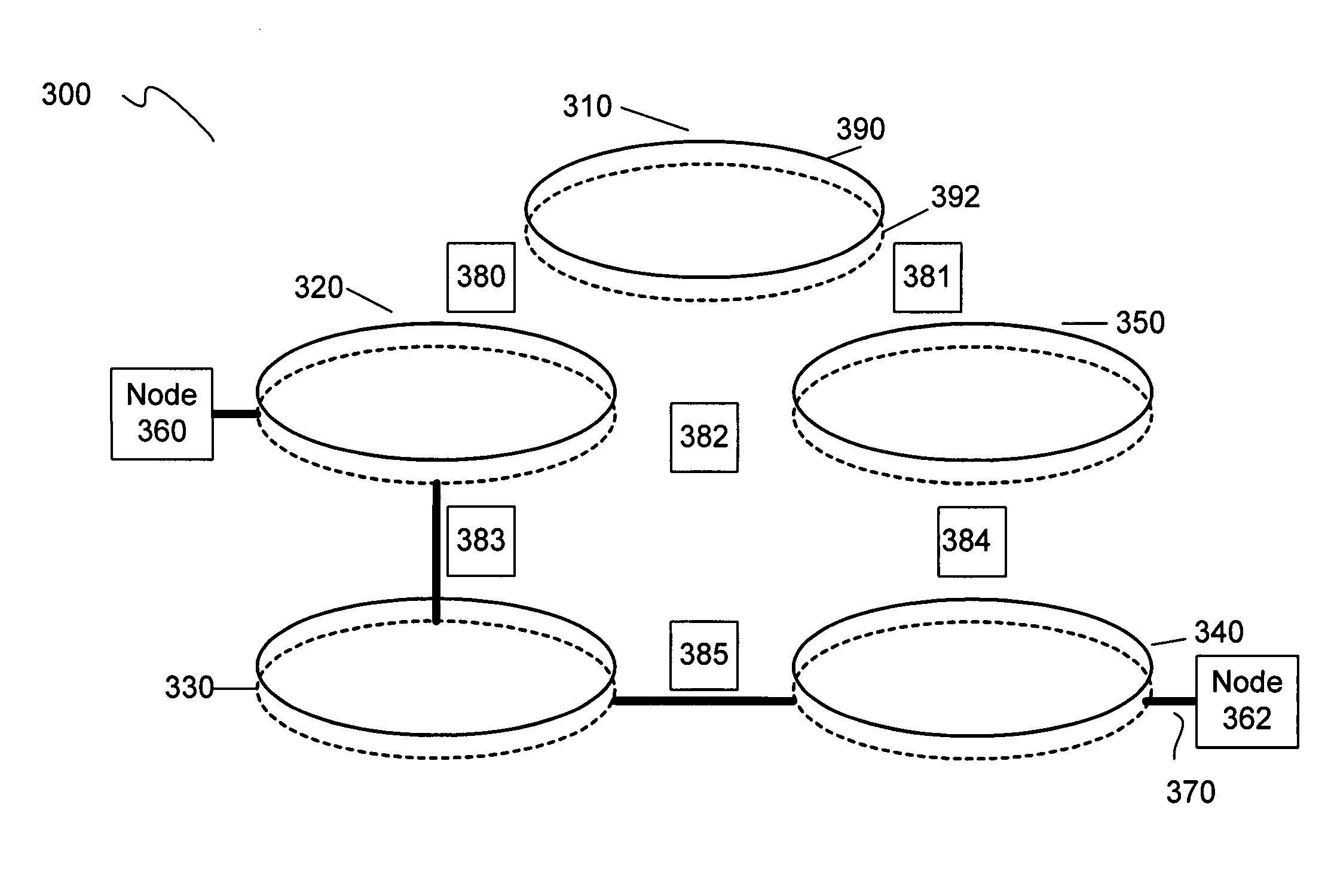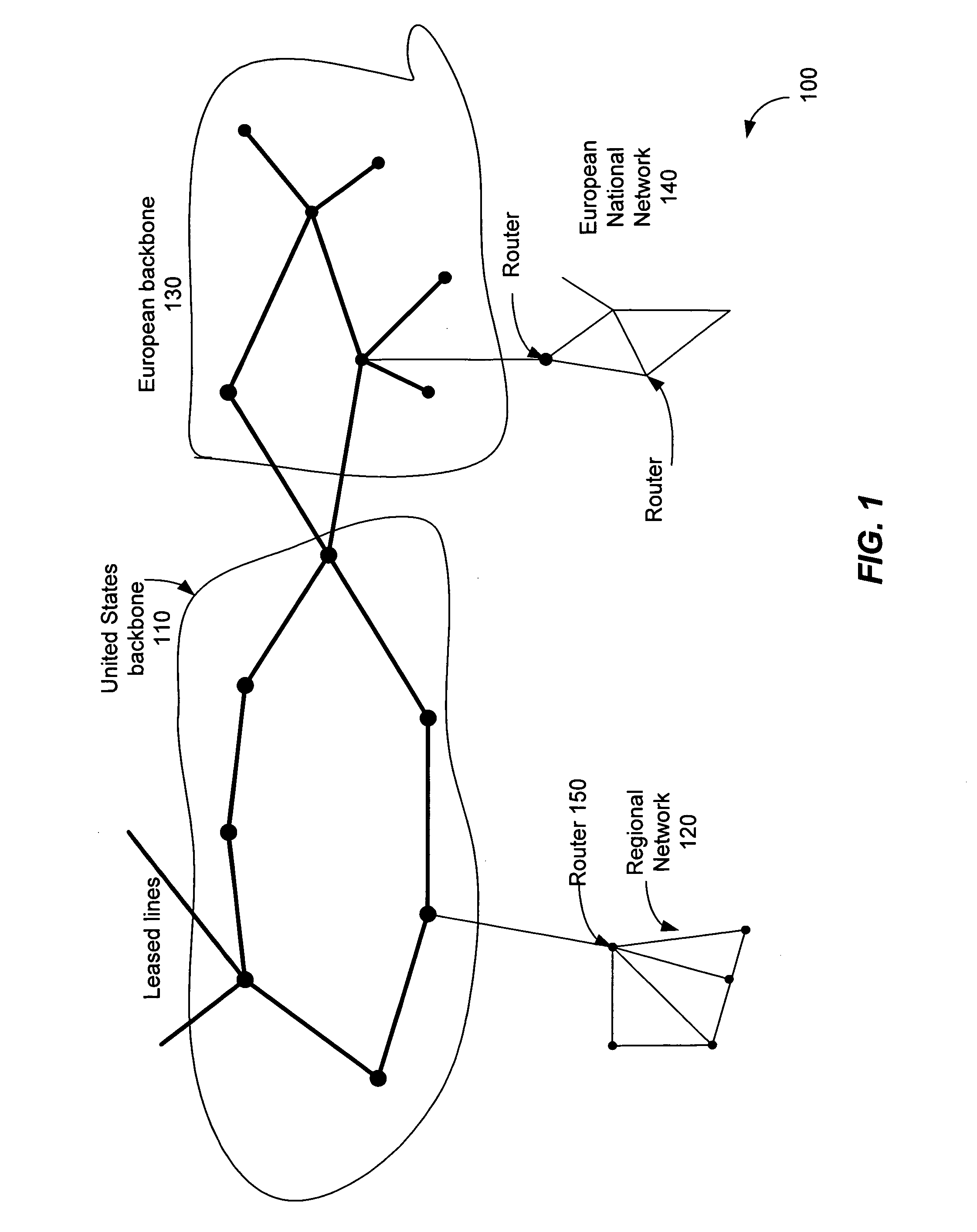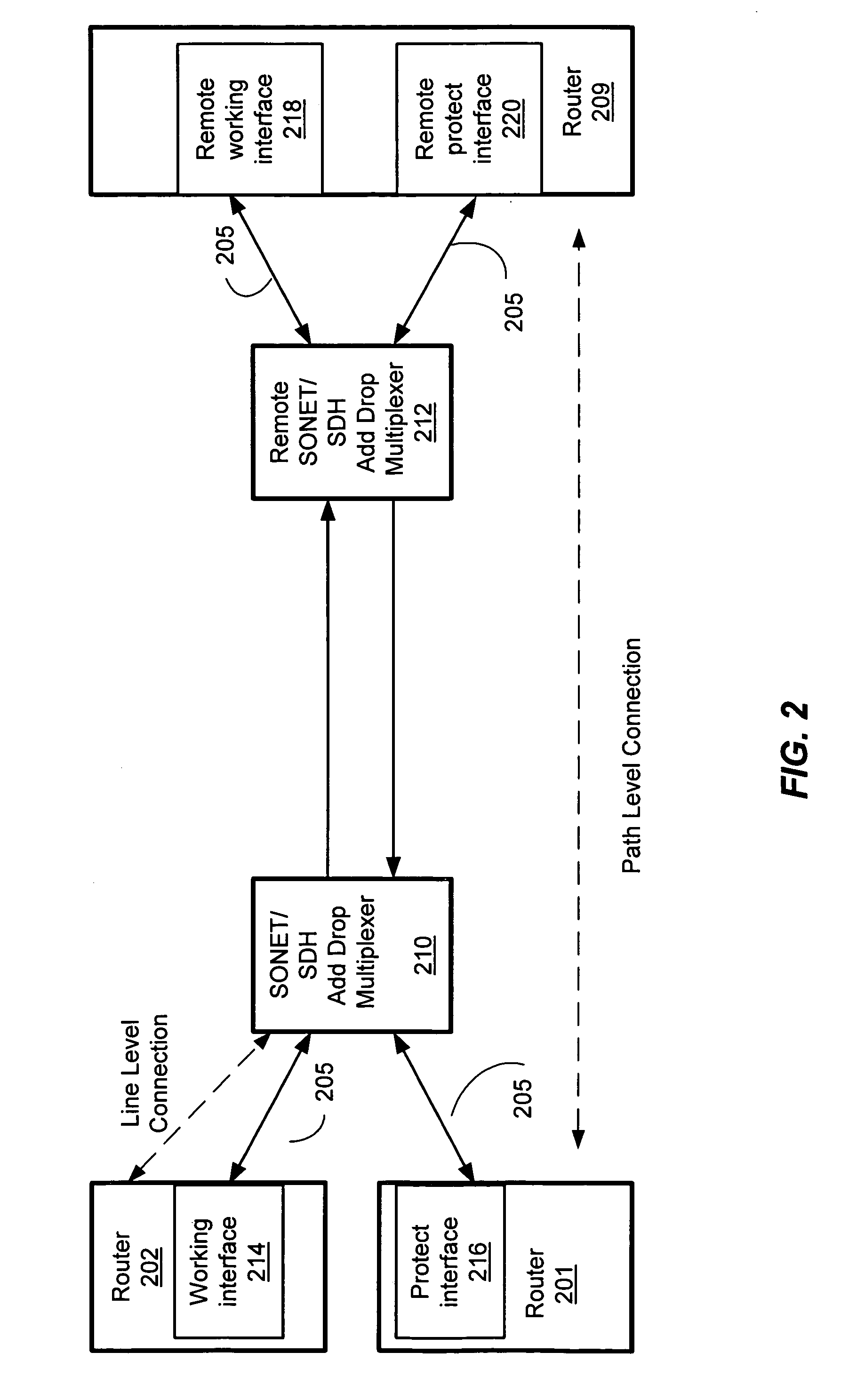Mesh with projection channel access (MPCA)
a technology of projection channel and access channel, applied in the field of information network, can solve the problems of inefficiency in capacity allocation, inability to scale well for large data network, and most failures are transparent to the end user, so as to increase the overall capacity of the network, maintain network reliability, and increase the traffic carrying capacity of the network
- Summary
- Abstract
- Description
- Claims
- Application Information
AI Technical Summary
Benefits of technology
Problems solved by technology
Method used
Image
Examples
Embodiment Construction
[0042]The following is intended to provide a detailed description of an example of the invention and should not be taken to be limiting of the invention itself. Rather, any number of variations may fall within the scope of the invention, which is defined in the claims following the description.
[0043]Referring to FIG. 1, block representation of a Synchronous Digital Hierarchy (SDH) / Synchronous Optical NETwork (SONET) communication system 100 shows a communications network including fiber optic networks. The network includes a United States backbone network 110 and a European backbone 130 networked together with a regional-level network 120 and a European national-level network 140. Networks 120 and 140 include “Wide Area Networks” (WANs) that also include fiber optic networks. Attached to the regional-level networks 120 could be “Local Area Networks” (LANs). The communication system 100 includes networks following the SONET or the SDH protocols for transmitting data organized into SO...
PUM
 Login to View More
Login to View More Abstract
Description
Claims
Application Information
 Login to View More
Login to View More - R&D
- Intellectual Property
- Life Sciences
- Materials
- Tech Scout
- Unparalleled Data Quality
- Higher Quality Content
- 60% Fewer Hallucinations
Browse by: Latest US Patents, China's latest patents, Technical Efficacy Thesaurus, Application Domain, Technology Topic, Popular Technical Reports.
© 2025 PatSnap. All rights reserved.Legal|Privacy policy|Modern Slavery Act Transparency Statement|Sitemap|About US| Contact US: help@patsnap.com



